What you need to know before installing a natural or chlorinated pool
Written by
29 November 2022
•
7 min read
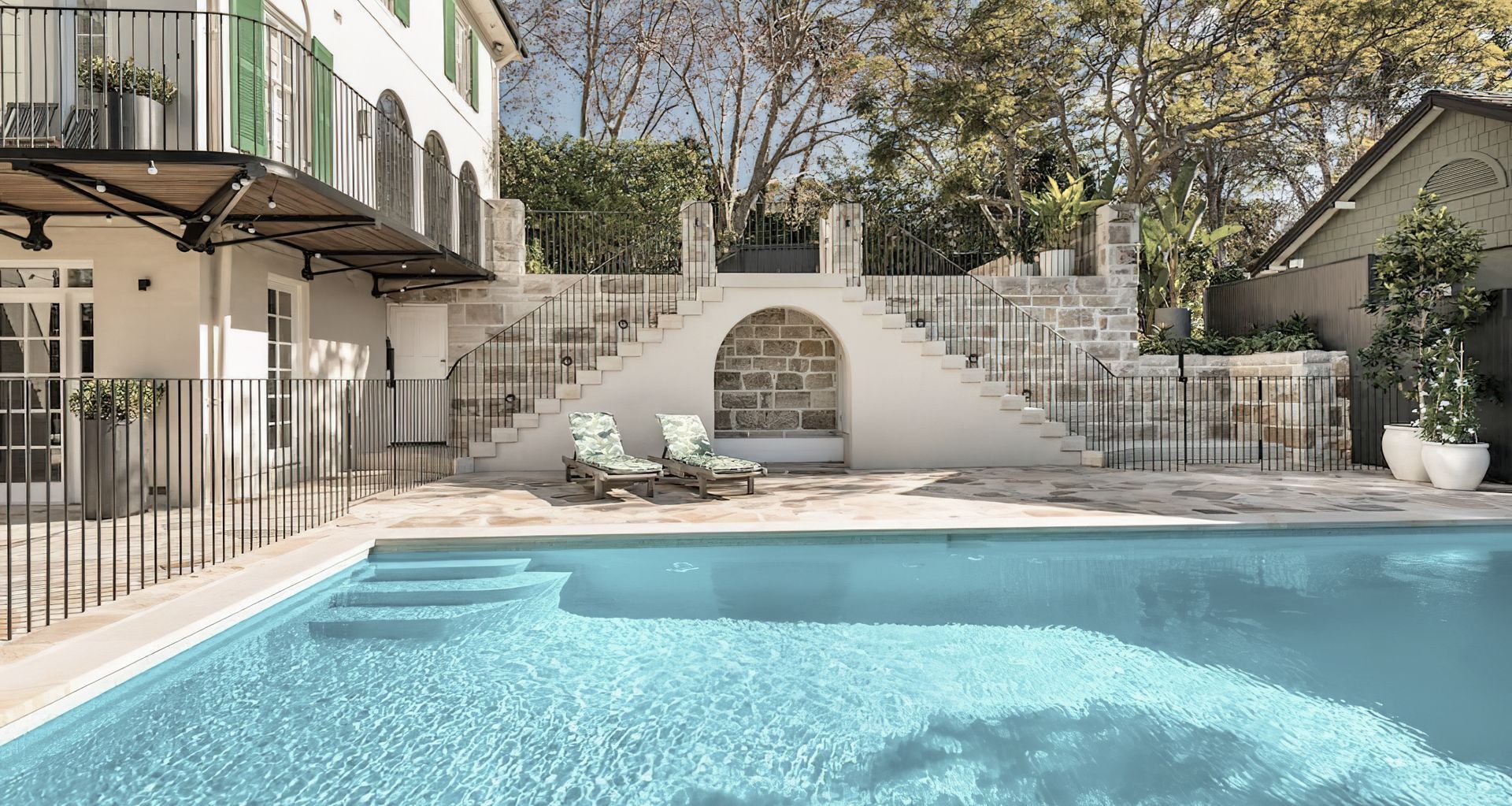
New research by PropTrack on the Australian housing market has found the most popular keyword search term on realestate.com.au in the first six months of 2021 was ‘pool’ – even in the country’s most southern state; Tasmania. While a private backyard pool is on the wish list of many homeowners, there are a few things you need to know about the size, safety and maintenance requirements, and how much a bespoke pool design will cost you.
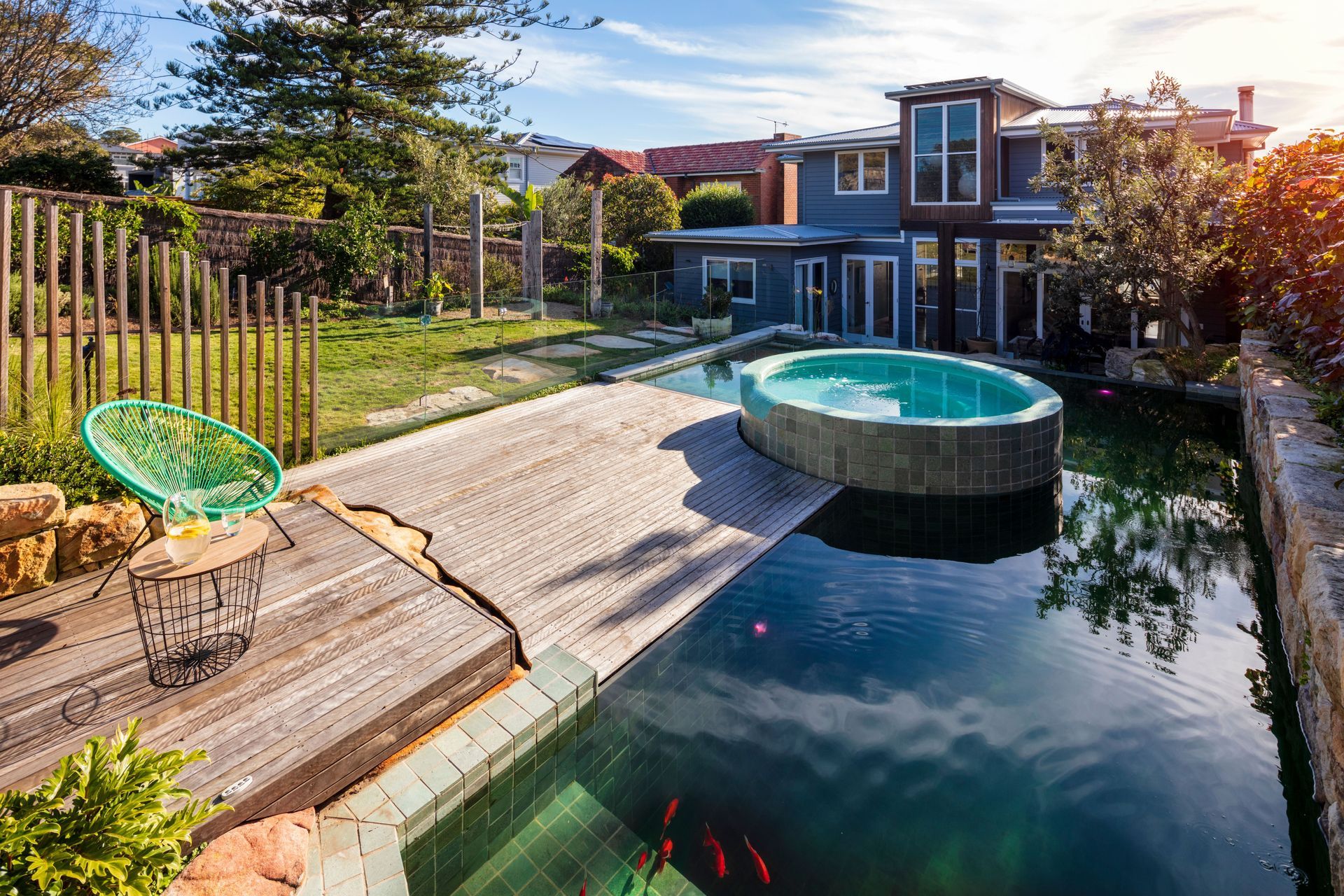
Size
Kieran Devlin, founder and director of KMD Outdoor Construction, is an accredited stone mason and landscape specialist with a particular interest in creating custom built-in concrete pools. “The recommended size for a pool is site-specific and will depend on the portion of land you’re allowed to build on,” says Kieran. “But, if you want a big pool where the kids can play in and friends and family can sit around and enjoy the sunshine, you’ll need eight to ten metres by four to five wide with a coupleof metres around it for outdoor furniture. Small pools such as a spa, where you just sit around and cool down, you’ll need a minimum of two and half by two metres.”
Julien Roy is the director of LandForms Natural Pools and Landscapes, a business that specialises in natural pools. That is, pools that utilise biological filtration in place of chemical sanitisers. “The concept is based on establishing a community of micro-organisms that remove nutrients and pathogens from the water through the processes of predation and competition,” explains Julien. “It is possible to install a natural pool in a small suburban backyard, and natural pools are also suitable for much larger bodies of water. Biofiltration is efficient in treating large volumes of water at relatively low startup costs and long-term reduced inputs of power and chemicals.”
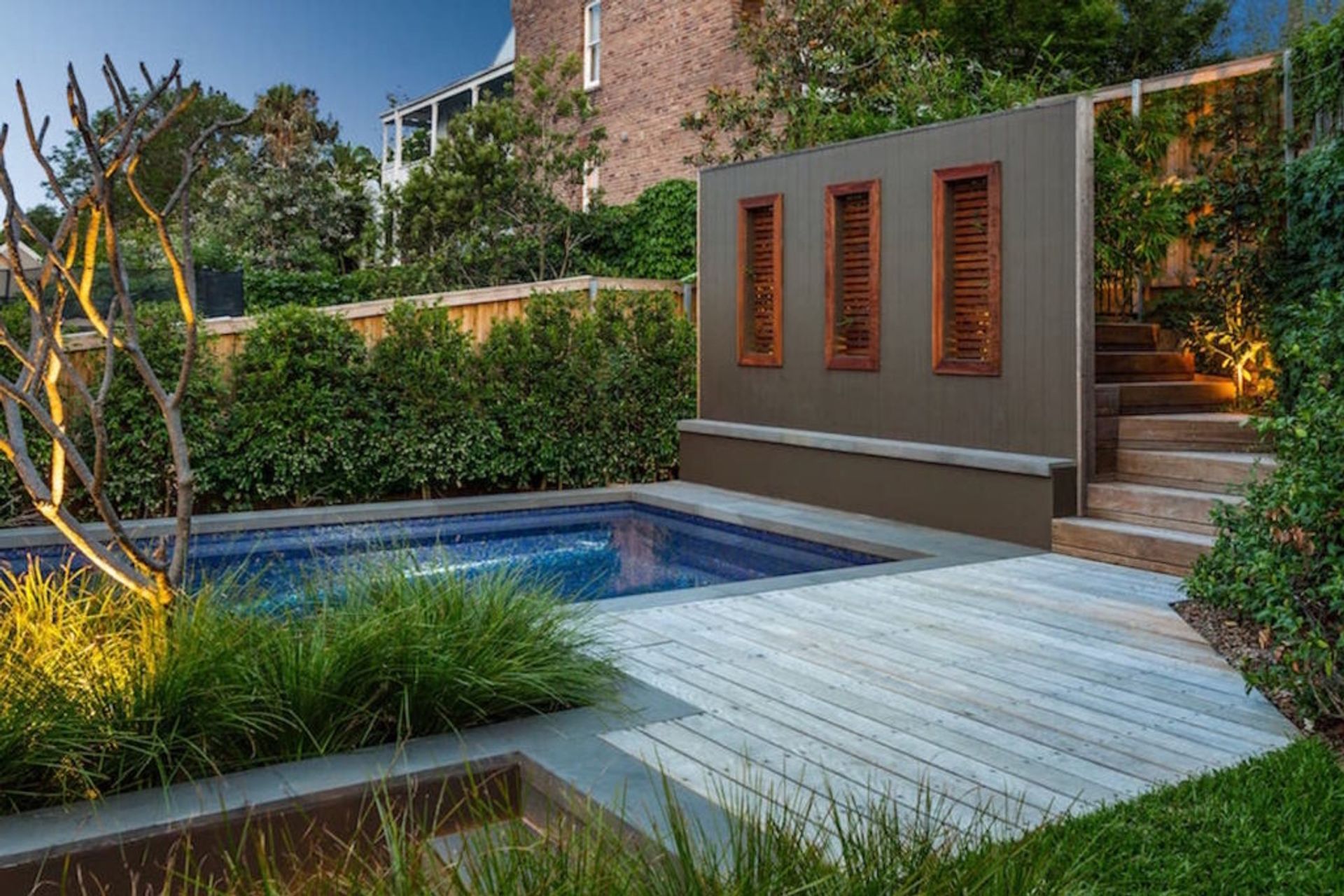
Location
Kieran says that a pool can be installed anywhere on your land, but it’s important to keep in mind how you plan to use the pool throughout the year. “You don’t really want a pool in the shade of the house or getting lots of wind. You can build windbreaks with fencing and vegetation planting, too. Plus, a pool in direct sunlight requires less heating,” says Kieran. “If your pool is located in a clean and open environment with no vegetation, a little bit of maintenance done often will produce a better result than a lot of maintenance rarely,” says Kieran.

Safety requirements
Kieran explains that having a 1.2-metre non-climbable fence is a non-negotiable for all types of pools and that the gap above, below and between fence railings can’t be more than 100mm. “I would also never use a tile that has less than a P5 slip rating, and I’m not a fan of using timber decking outside due to the maintenance required,” says Kieran. “Most people opt for stone or tiles, but keep in mind the darker the tiles the hotter they will get in summer. Similarly, the brighter white they are the more glare you’re going to get. I recommend lighter greys, beiges and fawns for poolside flooring.”
Julien says that Australian legislation for biofiltered pools isn’t yet as complex as it is in Europe or the US. “In private residences, there is no regulation restricting a naturally filtered body of water, apart from the usual pool fencing requirements,” says Julien.
Related article: 11 pool fencing ideas that combine style and safety
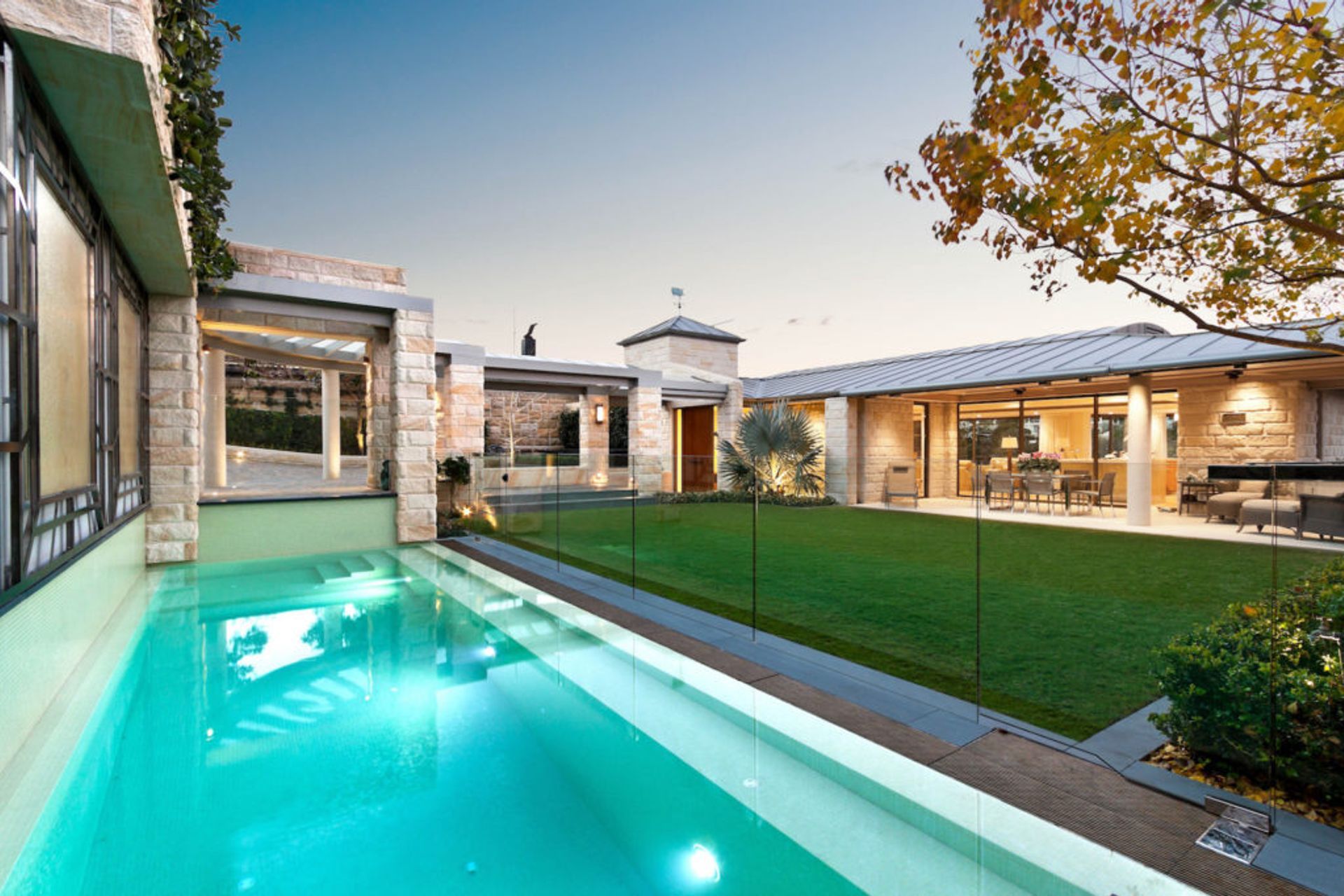
Maintenance
At the bare minimum, the chemistry of a chlorinated pool should be tested once a week, suggests Kieran. “Vacuum and clean your pool once every week to 10 days. These days you can get in floor cleaners, robotic vacuums, suction cleaners, creepy crawlies to keep a pool clean, but it’s the water chemistry that is most important,” he says. “The PH should sit between 7.2 and 7.5, too acidic and the sanitation in your pool won’t work, and it can eat away at your finish.”
Julien says when it comes to natural pools, the daily maintenance of checking the chemistry of pool water is replaced by periodic flushing of the filters, removing debris and tending to aquatic plants. “It’s important to control the amount of nutrients that enter the pool, but the main concern is to design the pool to ensure water run-off does not enter the system,” says Julien. “Good habits to adopt are showering before using the pool, and using sunscreens that don’t contain harmful chemicals or micro-plastics.”
Julien adds that natural pools will always have some biofilm growth on the submerged surfaces that will fluctuate seasonally and in reaction to external inputs and nutrient loads. “In-floor cleaning and pool covers are effective at removing debris and sediments to reduce maintenance,” he says.
Read now: How to create a private outdoor sanctuary for summer

Heating
While a natural pool won’t be heated, most chlorinated pools are via solar, gas-boosted, heat pumps or electric heating on demand. Kieran explains that small bodies of water, such as spas, have higher heating requirements that are often best served by gas or electric systems, while a larger pool benefits from solar panels or heat pumps.
“A larger pool can use a solar panel to keep water at 28-30 degrees in summer and extend your swimming season by providing warm water from October through to March or April in somewhere like Sydney,” says Kieran. “Heat pump technology for pools has improved vastly, and if you’re using the right accessories, such as the right size heater for your pool, pool blankets to keep in the heat overnight and to reduce evaporation – all those things – people in places like Sydney can swim all year round.”
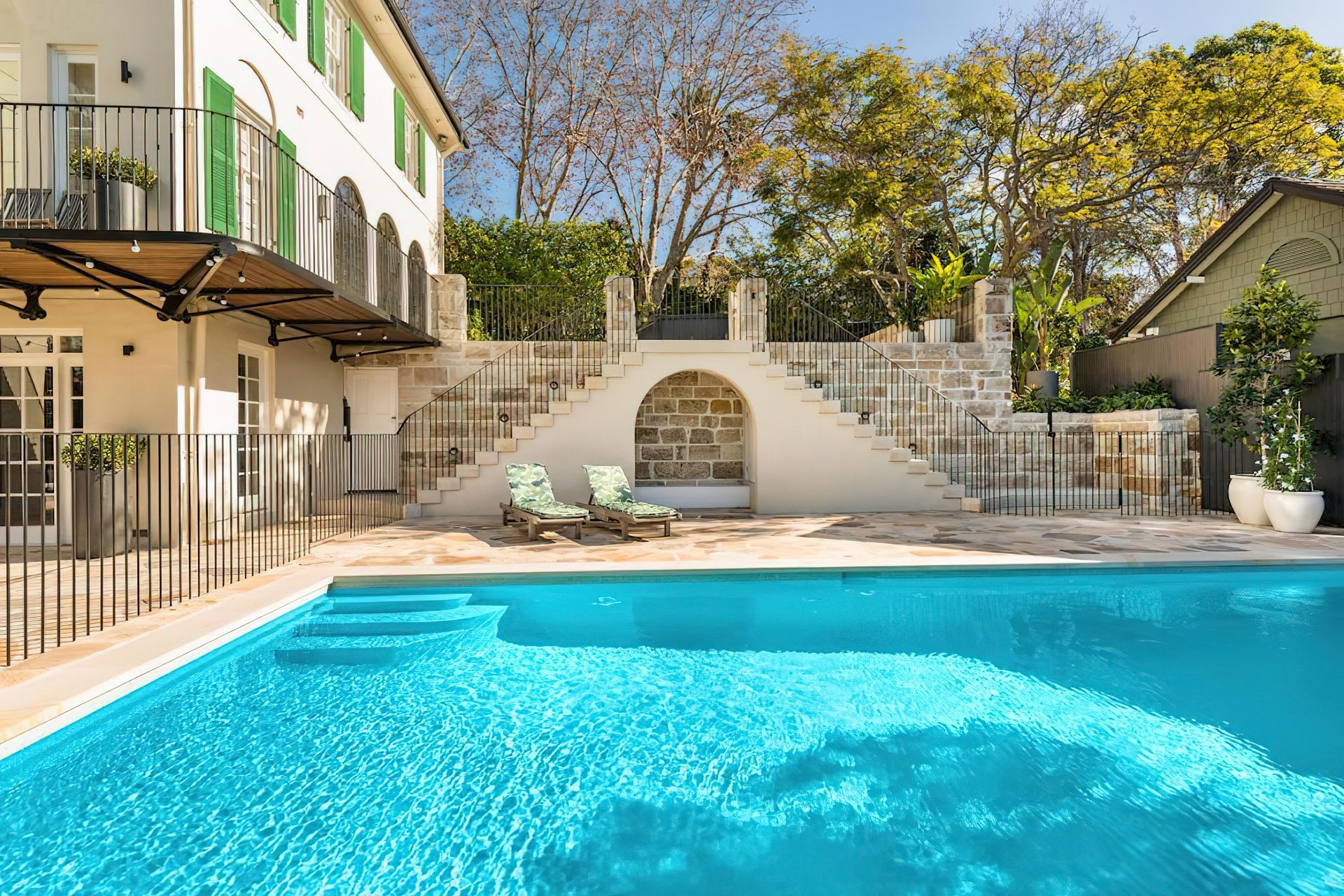
Cost
Built-in pools come in a variety of materials such as concrete, fibreglass and plastic, explains Kieran. “Fibreglass pools are a cheaper option, but for a custom concrete pool I would recommend allowing at least $80,000 for your pool budget,” says Kieran. “Finishes can be as expensive as you like, from $60 a square metre up to $300, but plain white fine pebble is cheapest for lining the pool, although I recommend a fully tiled pool for longevity, low maintenance and the look. Plus, tiles are more forgiving when it comes to your water chemistry.”
Natural, or the bio-filtered pools that LandForms specialise in, are designed to achieve a balanced ecosystem, says Julien. “The outcome is a body of water teaming with microbial life, and the benefits are mostly experiential; the water has a certain rejuvenating quality, andthere are possible benefits for our own microbiome and gut health,” says Julien. “Natural pools also provide habitat for aquatic plants and wildlife so they are great for biodiversity.”
LandForms pre-fab plunge pool options start at around $50,000 depending on site costs, while a bespoke natural pool starts at around $100,000.
Read now: How to extend your living space into the great outdoors
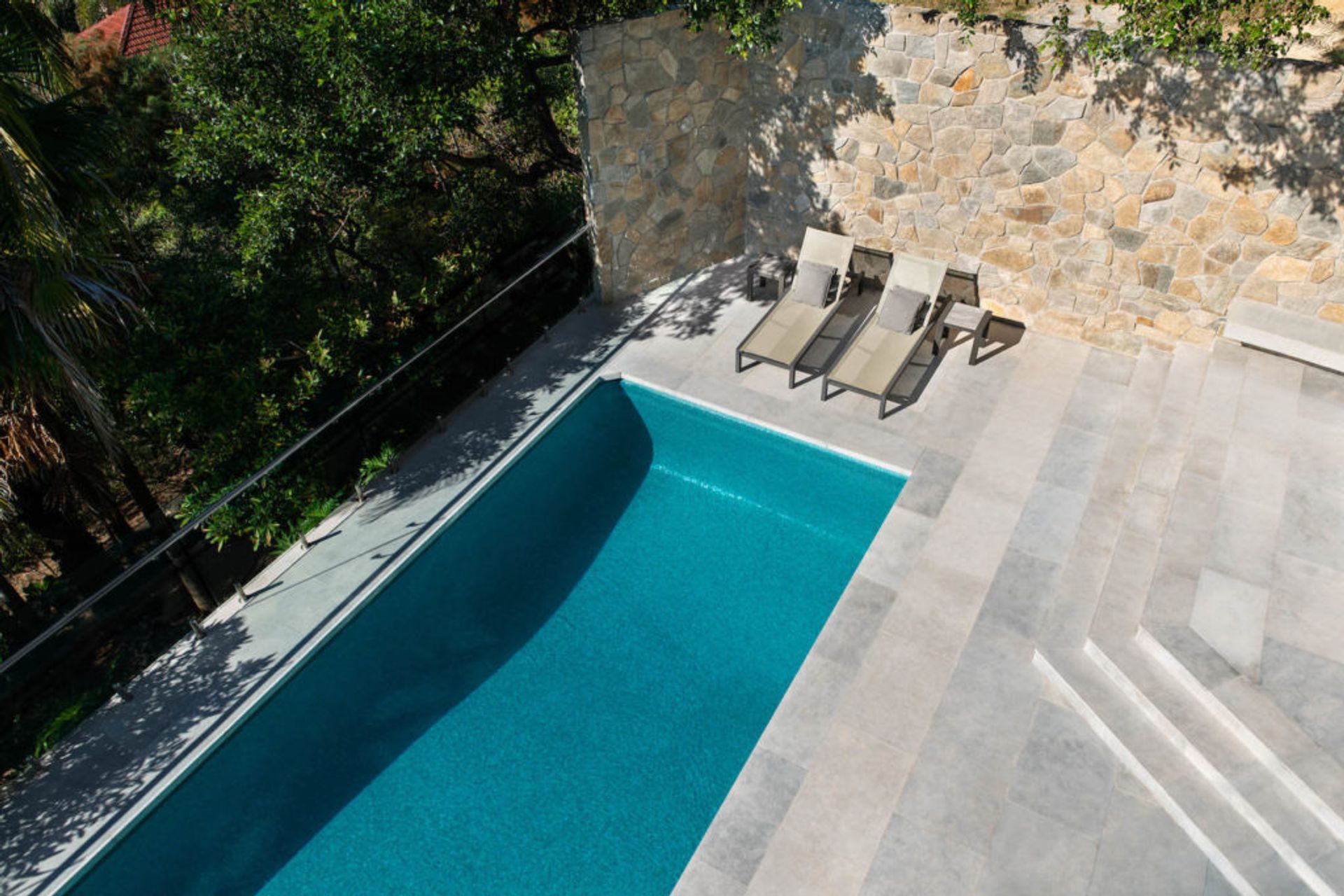
When to design your outdoor pool
Kieran says the best time to think about designing and installing a pool is when you’re designing your home. “The most successful projects are those that consider the outside area and pool during the house construction, which creates a seamless flow from inside to outside and vice versa,” says Kieran. “The pool should be integrated into your design theme otherwise it can look ‘added on’ and ruin your space."
Read more excellent advice articles on ArchiPro.